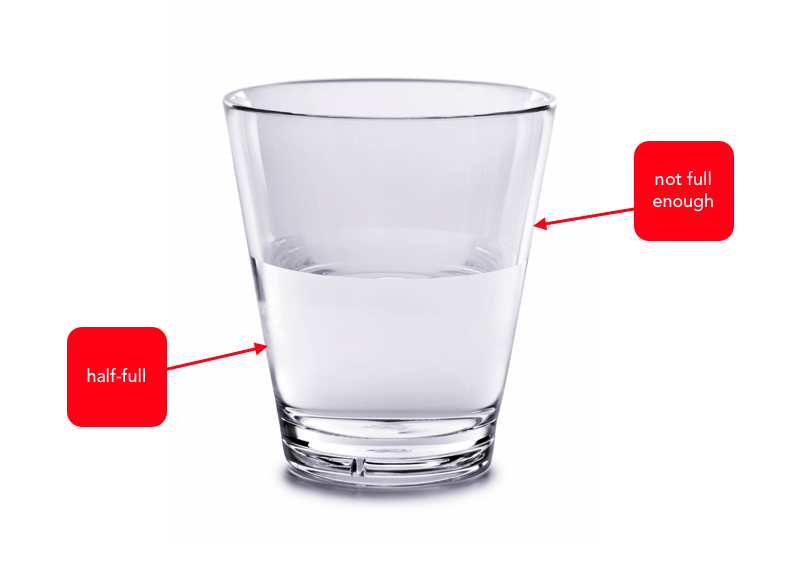 It turns out being an optimist is good for your health. Harvard grads who were optimists at age 25 had better health outcomes for the next three decades.
It turns out being an optimist is good for your health. Harvard grads who were optimists at age 25 had better health outcomes for the next three decades.
In broad sweeps, optimists have better cardiovascular health than pessimists. Their immune systems are more responsive, and they have more resilience to stress. The reason? Optimists have a stronger sense that what they do for themselves can make a difference (versus the pessimistic view of hopelessness, ie. why bother, nothing works anyway…). As a result, optimists are more likely to adopt healthy lifestyle changes.
So, the question is: are you a pessimist or an optimist? Do you have a positive long-term outlook? Do you have, generally speaking, hope for the future? If you do, the above news is fab for you. Way to go! But…what if you (and let’s be honest here, people) tend to the pessimistic side? Is this just another piece of news to feel depressed and hopeless about?
If you’re a pessimist, can you change? Can you become more optimistic? In other words: how much is up to us? Is there a biologic “set point” for how positive or negative our disposition is destined to be?
Well I’ve got some good news. Turns out that an optimistic outlook, when it comes to impact on health, is less important than optimistic behavior. It’s what you do that makes a difference. It’s the act of engaging with the world, of taking concrete steps and working on goals, that improves health. That’s the key. And behavior? Well, that can be changed.
Here’s what Psychology Today has to say:
Optimists seem to be sprinkled with fairy dust. They suffer less and recover quicker. They’re healthier and better-liked and have stronger marriages and more fun. It’s enough to make the rest of us gloomy—except that psychologists believe that a lot of these qualities stem from cognitive habits that can be learned. More than any other major personality trait, optimism is a matter of practice.
So this is good news, yes? We can learn to be optimistic.
Let’s start by figuring out what optimism is, exactly, and how it differs from pessimism. Essentially, optimism is the ability, and the tendency, to imagine a positive outcome.
When you have an optimistic or hopeful outlook you weather present-time stress better. Even when your present reality is unpleasant, if you have the view that the future holds good things, this can buffer your present stress. A more pessimistic viewpoint would get mired down in the current difficulties and unpleasantness.
Pessimists are skeptical that their own actions can effect any significant change. What’s worse, they often don’t even recognize good fortune when it’s right in front of them. They won’t even bother trying to solve problems, because they’ve already decided it’s not going to work out. A lot of this behavior stuff, then, comes down to persistence. When someone believes the future will be generally positive, they will persist, continue to re-evaluate their efforts, and keep working to solve problems. A pessimist would be more likely to give up altogether.
Research shows that it’s not what happens to you, specifically, but how you explain what happens that counts. If an optimist is wrestling with a new appliance that’s not cooperating, she’s likely to say, “Okay maybe the instruction manual is unclear or this model isn’t working properly or maybe I’m having an off day.” The optimist views the failure as being outside herself, and temporary (an off day). A pessimist would see this failure as being internal (it’s all my fault) and permanent. And would extend the feeling beyond this specific situation (this always happens to me.)
The key is to learn to define negative events as a) not your fault, and b) isolated occurrences that have no bearing on future events or other areas of your life. And then, to think of positive events as being a) because of something you did, b) a sign of more good things to come and c) evidence that good things will happen in other areas of your life. If you can do this, you’re on the road to optimism.
There’s a book called Learned Optimism on exactly this topic (by Martin Seligman–a major “positive psychology” guru). Seligman says the goal is to stop thinking pessimistically, rather than try to learn to start thinking optimistically (which, he says, rarely works anyway).
His classic exercise on how to boost optimism is neatly formulated into ABCDE.
A: Adversity. Name the problem; write it down.
(For example: “I never have enough time to get everything done.”)
B. Beliefs. List your beliefs, or initial reactions to the problem.
(“It’s hopeless, there just aren’t enough hours in the day. I’m going to feel stressed and pressured forever, never get on top of anything, and never achieve the things I want to. Other people seem to manage their lives just fine, there must be something wrong with me.”)
C. Consequences. Identify what’s going to happen, as a result of your beliefs.
(“I’m going to give up trying. Why bother? Nothing ever works. I’ll never have enough time to do it all.”)
D. Disputation. Dispute some of those distorted thoughts and overreactions. Play devil’s advocate if you have to.
(“Perhaps I’m trying to do too much. Maybe I need to take a hard look at my priorities and see if I can pare down. And the overwhelmed feeling–maybe that’s paralyzing. If I just take things one step at a time, I’ll eventually get there. Giving up isn’t going to solve anything.”)
E. Energized & Empowered. Describe how energized and empowered you feel now.
(“I’m more motivated to get organized, and do a better job prioritizing. I’m not going to let overwhelm paralyze me.”)
Practice this exercise as often as possible, writing down your ABCDEs in a journal if possible. Eventually, it will become an automatic habit for you.
Then say hello to a happier, healthier you!






